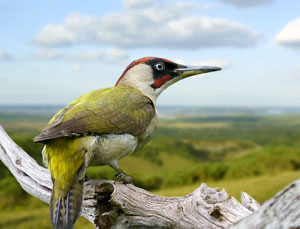The Hobby: Master of the Skies
Few animals in the huge array of British wildlife have the strength and grace of the British Hobby (Falco subbuteo). They really do command the skies. The hobby has established itself as a symbol of avian majesty and a fascinating topic of ornithological study due to its allure and agility as a raptor.
Physical Characteristics:

A medium-sized falcon, the British Hobby is known for its streamlined and aerodynamic design. It is a fearsome airborne predator with a 60–80 centimetre wingspan and a length of 30–36 centimetres. It has an appearance of dignified elegance due to its remarkable plumage, which includes a blue-grey back, rufous underparts, and pronounced black markings around the face.
Habitat and Distribution:
A migratory bird, the British Hobby comes to the UK in the summer to breed. It lives within a range of environments, including moorlands, heathlands, and forests. Although it can be found all over the British Isles, it prefers the south and east where its favourite prey is more commonly found.
Behaviour and Hunting Techniques:
The distinguishing feature of the Hobby is it’s extraordinary aerial ability. It is built for swift flight and nimble manoeuvring, with long, pointed wings and a sharp beak. Hobbies involve expert hunting, with the main prey being insects like dragonflies, beetles, and small flying birds. They are well-renowned for their peculiar hunting style, termed as “hawking,” in which they pursue their prey with amazing speed and accuracy while frequently engaging in breathtaking aerial acrobatics.
Breeding and Nesting:
Hobbies build their nests in towering trees during the breeding season, frequently selecting other birds’ abandoned nests as their own. Usually, they lay 2-4 eggs in their clutch, and the female tends to them for about a month. When they hatch, the young are taken care of by both parents, who progressively teach them the fundamentals of hunting.
Migratory Patterns:
The Hobby comes to the UK for the summer from its sub-Saharan African wintering grounds. Its migratory trek covers thousands of kilometres, and birdwatchers and aficionados eagerly await its return to see its impressive aerial displays and hunting ability.
Conservation Status and Current Challenges:
Although the Hobby is not thought to be globally threatened, factors like habitat loss and climate change may have an impact on the species’ conservation status in some areas. Some key habitats are now protected as part of conservation efforts Other conservation efforts also include educating people about the value of keeping open spaces and observing bird behaviour and migration routes.
The Hobby’s Role in the UK’s Wildife Ecosystem:
The Hobby controls insect populations, especially those of flying insects, which is essential for preserving the ecosystem’s balance. Its adept hunting methods support the stability and health of the natural environment by assisting in the management of pests.
Appreciating the Majesty of the Hobby:
An uncommon and treasured event for birdwatchers is seeing a Hobby in flight. This nimble raptor’s ability to perform complex aerial manoeuvres while soaring through the air is a monument to both the wonders of evolution and the delicate balance of nature.
The Hobby is a representation of the biodiversity in Britain. Its ability to hunt from the air and its integral place in the ecosystem serve as a reminder of the complex interactions that characterise our natural world. We can only hope that the skies over the UK will continue to be an environment that supports these amazing creatures.



